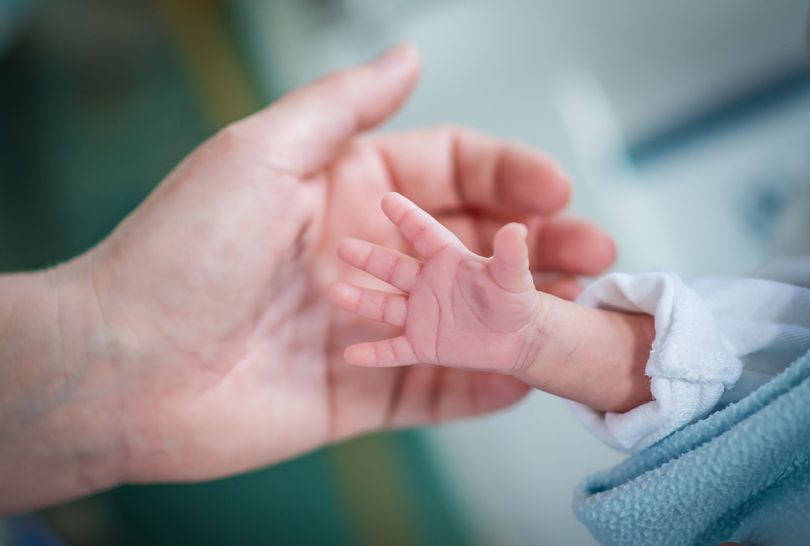
The many wires and medical devices connected to premature babies are life-saving, but hinder parents from having crucial bonding time. Popular Science reports that a research team from Northwestern University recently developed small, sticker-like wireless biosensors that monitor necessary vital signs and may eliminate the need for bulky wiring.
A test group of premature babies at the Robert H. Lurie Children’s Hospital of Chicago wore the new stickers alongside traditional wiring and results published in the journal Science indicate that these stickers have potential to transform health care for adults as well as newborns.
Skin-to-skin contact between premature babies and their mothers is essential, explains Steve Xu, a dermatologist and the director of the Center for Bio-integrated Electronics at Northwestern University, and a co-author of the study. “It helps to stabilize their heart rates, improves their laboratory results and their breathing, and reduces stress," Xu said to the outlet, "but the number one barrier to skin-to-skin contact is hospital equipment."
John Rogers led the team of materials scientists at Northwestern University who had long been working on these sensors. Testing the technology in a clinical setting, particularly in preemies first, was intentionally ambitious. Rogers told Science, “we picked the NICU because it is hard. We purposively don’t go after low hanging fruit.”
Using biosensors on premature babies was a challenge due to the sensitivity and fragility of their skin, which could get damaged with the removal of normal sticky sensors.
“We decided to start with the hardest thing with the most demanding set of measurement requirements with perhaps the most difficult patients in terms of skin sensitivity and work from there.”
“We felt like if we could successfully address this set of requirements, then transitioning to consumer applications would then be far more straightforward,” Rogers said to Science. “We decided to start with the hardest thing with the most demanding set of measurement requirements with perhaps the most difficult patients in terms of skin sensitivity and work from there.”
Looking ahead, the team plans to explore what insights the data from constant monitoring could reveal for both premature babies and adult humans alike. The outlet notes the growing trend of biometric tracking as shown by the increased adoption of Apple Watch and Fitbit. These sensors would be a much more discreet alternative to most other wearables.
“We are reaching that critical mass where technology such as these are producing enough data where the insights are coming. Just like our genetics, informing in many ways how healthy we are, our vital signs and the data that our bodies are producing, is in some ways a digital genome,” Xu said to Science. “I think, in the very near future, technologies such as these are going to be able to provide deeper and deeper insights.”



